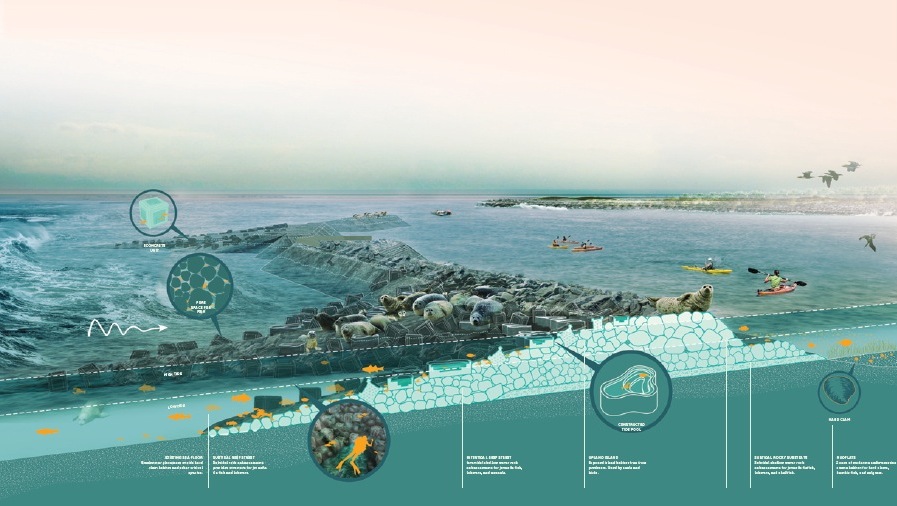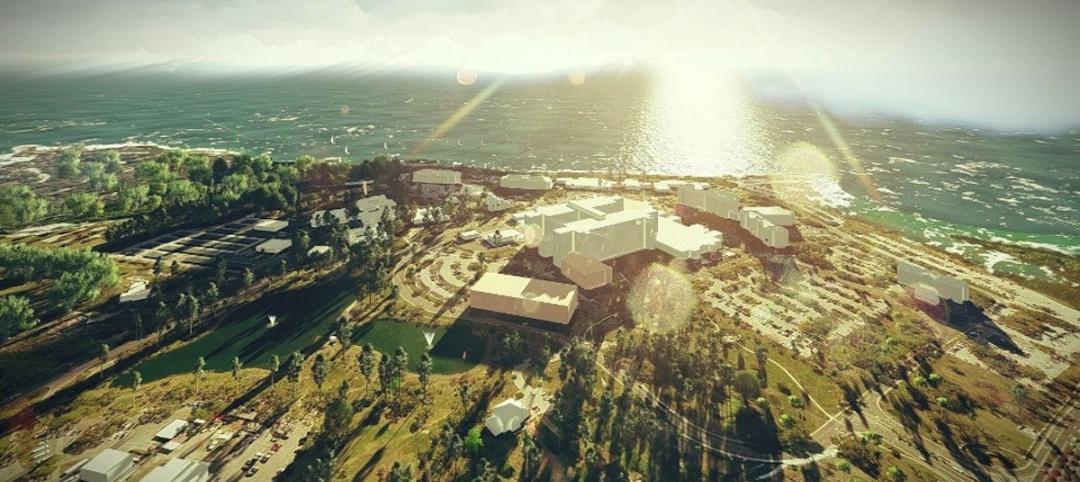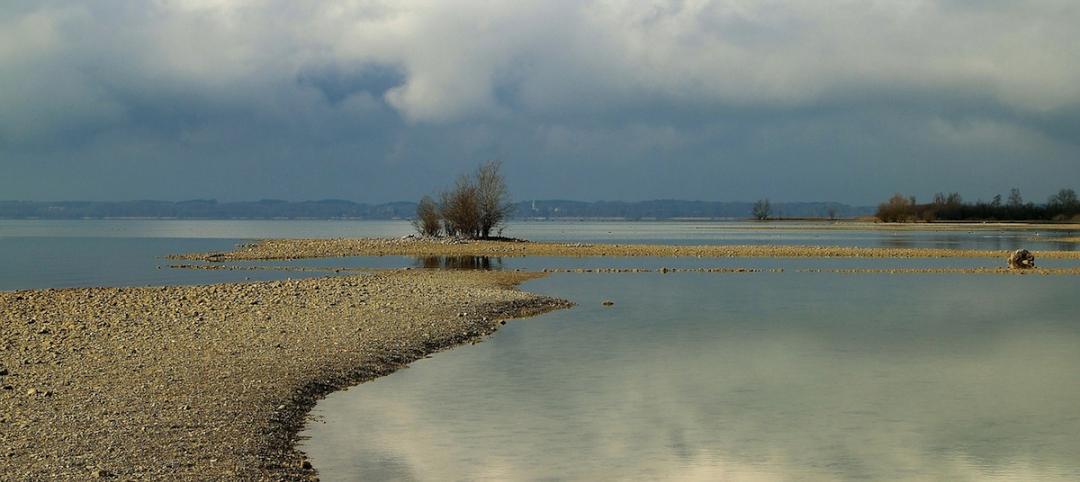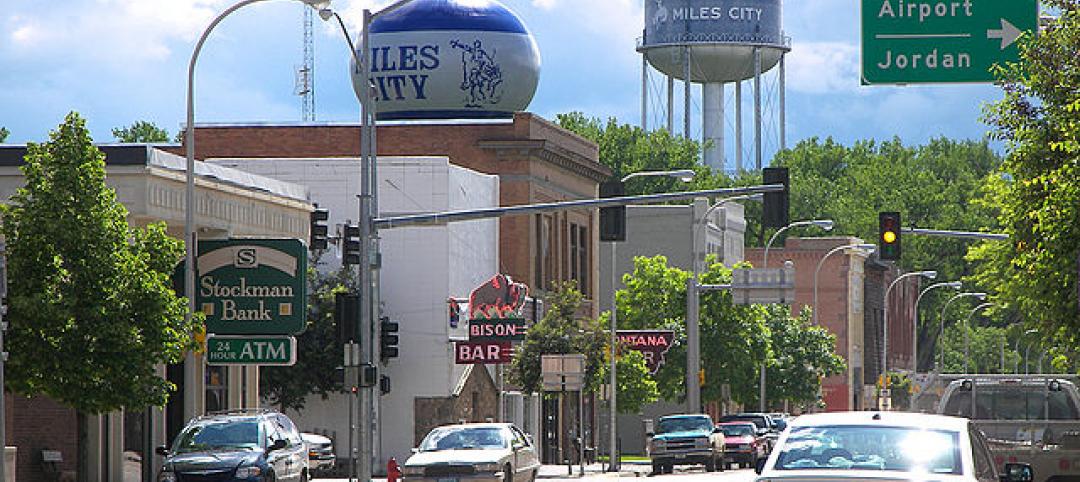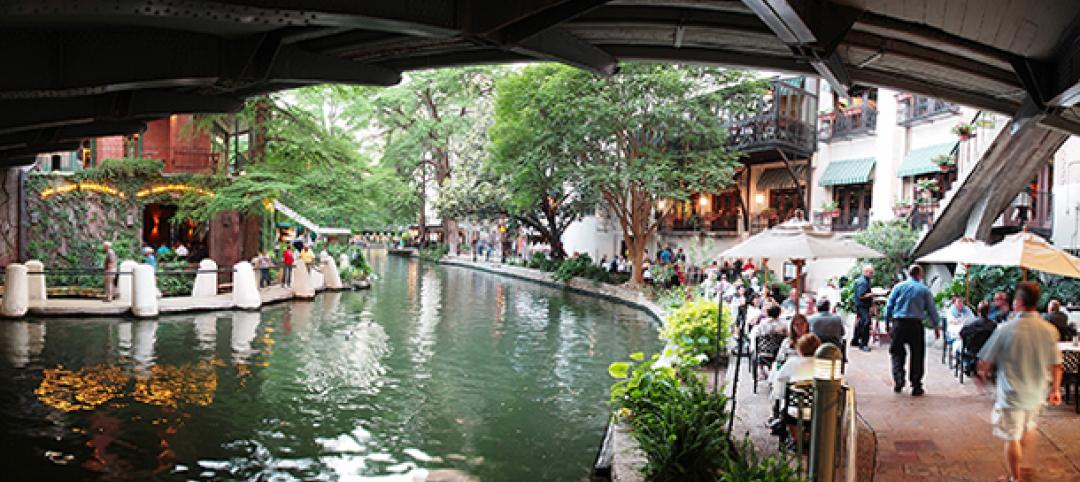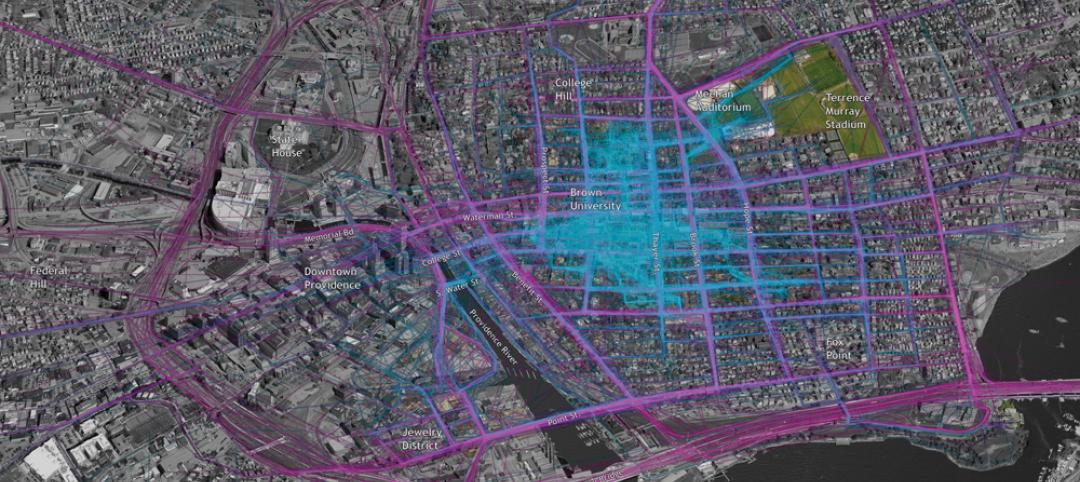New York-based landscape architecture firm SCAPE won the Buckminster Fuller Institute’s 2014 Fuller Challenge, billed as socially responsible design’s highest award.
The development project, Living Breakwaters, is a climate change adaptation plan. A 2014 Fuller Challenge senior advisor and jury member, Bill Browning of Terrapin Bright Green, said about the project: “Living Breakwaters is about dissipating and working with natural energy rather than fighting it. It is on the one hand an engineering and infrastructure-related intervention, but it also has a unique biological function as well. The project team [understands] that you cannot keep back coastal flooding in the context of climate change, but what you can do is ameliorate the force and impact of 100 and 500 year storm surges to diminish the damage through ecological interventions, while simultaneously catalyzing dialog to nurture future stewards of the built environment.”
According to SCAPE, Living Breakwaters “reduces risk, revives ecologies, and connects educators to the shoreline, inspiring a new generation of harbor stewards and a more resilient region over time.”
This is accomplished through a series of projects, including designing “reef street” micro-pockets of habitat complexity to host finfish, shellfish, and lobsters.
A release from the Buckminster Fuller Institute explains that the Living Breakwaters project "integrates components ranging from ecologically engineered ‘Oystertecture,’ to transformational education around coastal resiliency and the restoration of livelihoods traditional to the community of Tottenville in state Island,” while also encouraging systemic change in regulatory pathways at the state level.
Fuller Challenge's Program Manager Sarah Skenazy said, "This year’s Challenge winners deeply know that doing a physical intervention off the coastline would not be enough to create systemic change. Living Breakwaters is a project based in connections—the leadership team brings their deep expertise in technology and ecological science into the social dimension onshore in partnership with the community itself."
On winning the award, SCAPE’s Kate Orff said, "We are so honored to be the 2014 Fuller Challenge recipient. Fuller was optimistic about the future of humanity and deeply believed in cooperation as the way forward. As climate change impacts threaten shoreline populations, Living Breakwaters hopefully represents a paradigm shift in how we collectively address climate risks, by focusing on regenerating waterfront communities and social systems, and enhancing threatened ecosystems."
Orff will accept the Fuller Challenge prize and a $100,000 cash award on behalf of SCAPE at The Wythe in Brooklyn, N.Y., on November 20.
Learn more about the project at SCAPE.
Related Stories
BIM and Information Technology | May 26, 2015
Moore's Law and the future of urban design
SmithGroupJJR's Stephen Conschafter, urban designer and planner, discusses his thoughts on the 50th anniversary of Moore's Law and how technology is transforming urban design.
Smart Buildings | May 21, 2015
Resiliency and climate change: Dual perspectives from designers at HDR
Two geographies, two perspectives, one conclusion: from Minnesota to Miami, resiliency matters, write HDR's Bob Beduhn and Lynette Cardoch.
Smart Buildings | May 1, 2015
FEMA to require states to evaluate risks posed by climate change
The aim is for states to do a better job planning for natural disasters they are likely to face in a warming world.
Smart Buildings | Jan 7, 2015
NIBS report: Small commercial buildings offer huge energy efficiency retrofit opportunities
The report identifies several barriers to investment in such retrofits, such as the costs and complexity associated with relatively small loan sizes, and issues many small-building owners have in understanding and trusting predicted retrofit outcomes.
Smart Buildings | Jan 7, 2015
Best practices for urban infill development: Embrace the region's character, master the pedestrian experience
If an urban building isn’t grounded in the local region’s character, it will end up feeling generic and out-of-place. To do urban infill the right way, it’s essential to slow down and pay proper attention to the context of an urban environment, writes GS&P's Joe Bucher.
BIM and Information Technology | Dec 28, 2014
The Big Data revolution: How data-driven design is transforming project planning
There are literally hundreds of applications for deep analytics in planning and design projects, not to mention the many benefits for construction teams, building owners, and facility managers. We profile some early successful applications.
Smart Buildings | Dec 3, 2014
Arup research explores urban infrastructure design in 2050
The report projects a future where highways will be made from self-healing, glow-in-the-dark materials and will be governed by sophisticated technologies that communicate with cars, road infrastructure, and GPS systems.
Smart Buildings | Oct 30, 2014
Energy Department pledges $9 million for energy efficiency improvements on commercial buildings
The U.S. Dept. of Energy will spend $9 million to encourage investments in energy-saving technologies that can be tested and deployed in offices, shops, restaurants, hospitals, hotels and other types of commercial buildings.
Smart Buildings | Jun 8, 2014
Big Data: How one city took control of its facility assets with data
Over the past few years, Buffalo has developed a cutting-edge facility management program to ensure it's utilizing its facilities and operations as efficiently, effectively, and sustainably as possible.
Smart Buildings | May 19, 2014
New York should forget about surge barriers for most cost-effective resiliency plan, say researchers
Massive storm surge barriers would be too costly for the potential benefit to protect New York City from violent storms like Hurricane Sandy, researchers say.


